Jan & John Maggs
Antiques and Art
~ ~ ~ ~ ~ ~ ~ ~ ~ ~ ~ ~ ~ ~ ~ ~ ~ ~ ~ ~ ~ ~ ~ ~ ~ ~ ~ ~ ~ ~ ~ ~ ~ ~ ~ ~ ~ ~ ~ ~ ~ ~ ~ ~ ~ ~ ~ ~
Exploring historic English properties - Our 2024 National Trust Odyssey
Part I - Cotswolds to West Yorkshire
~ ~ ~ ~ ~ ~ ~ ~ ~ ~ ~ ~ ~ ~ ~ ~ ~ ~ ~ ~ ~ ~ ~ ~ ~ ~ ~ ~ ~ ~ ~ ~ ~ ~ ~ ~ ~ ~ ~ ~ ~ ~ ~ ~ ~ ~ ~ ~
We spent our first week in London and
the South, combining business with the joy of being in this fabulous city. On Saturday, after connecting with old friends at Portobello
Market, we took the tube to Temple Station and walked to Somerset House,
where we made our first visit to the Courtauld Gallery. This lesser-known London
museum is noted for its exceptional group of paintings by French
Impressionists, including this well-known canvas by Manet.
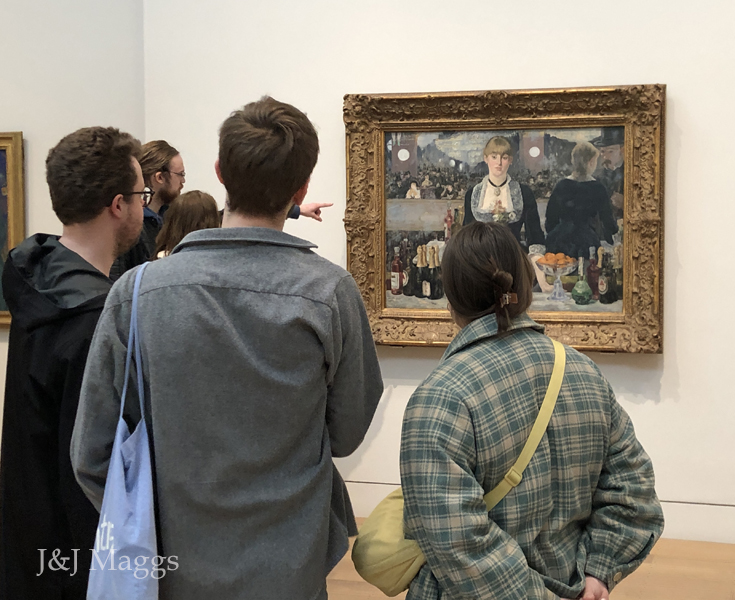
Édouard Manet (1832-1883).
A Bar at the Folies-Bergère
~ ~ ~ ~ ~ ~ ~ ~ ~ ~ ~ ~ ~ ~ ~ ~ ~ ~ ~ ~ ~ ~ ~ ~ ~ ~ ~ ~ ~ ~
On Sunday afternoon we left London and picked up our rented Nissan Qashqai at Heathrow. But our National Trust itinerary could not begin until we’d visited our favorite shops in the Cotswolds. After two days of shopping and a morning of preparing stock and documentation for shipment to Conway by DHL, we were free to begin our journey through English history. Our first destination was in Warwickshire.
~ ~ ~ ~ ~ ~ ~ ~ ~ ~ ~ ~ ~ ~ ~ ~ ~ ~ ~ ~ ~ ~ ~ ~ ~ ~ ~ ~ ~ ~ ~ ~ ~ ~ ~ ~ ~ ~ ~ ~ ~ ~ ~ ~ ~ ~ ~ ~
1. Baddesley Clinton
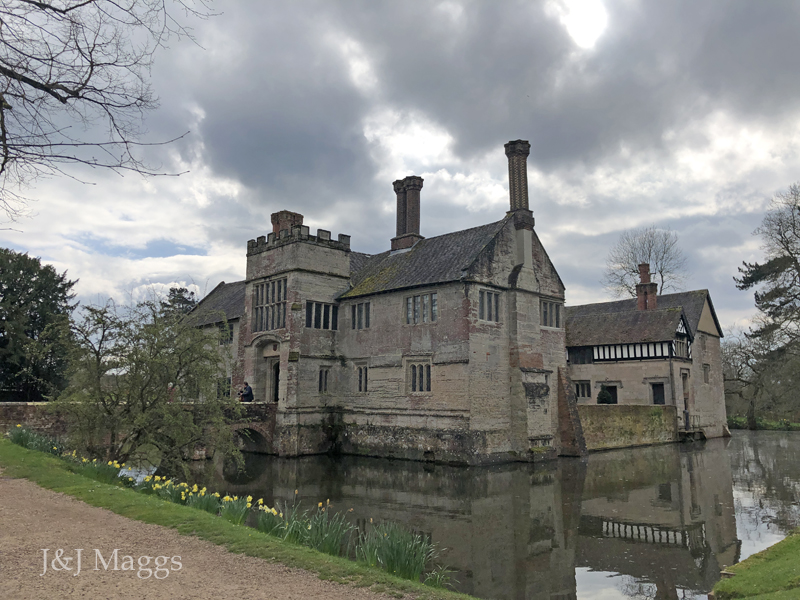
The setting of Baddesley Clinton,
a 15th-century moated manor house
located only ten miles from
Birmingham, transports the
visitor to an earlier time. Baddesley is exceptional in having been owned by
a single family for five centuries. Although changes were made
during that time, the house retains its medieval flavor and, most
importantly to us, much of the family's antique
furnishings.
~ ~ ~ ~ ~ ~ ~ ~ ~ ~ ~ ~ ~ ~ ~ ~ ~ ~ ~ ~ ~ ~ ~ ~ ~ ~ ~ ~ ~ ~ ~ ~ ~ ~ ~ ~ ~ ~ ~ ~ ~ ~ ~ ~ ~ ~ ~ ~
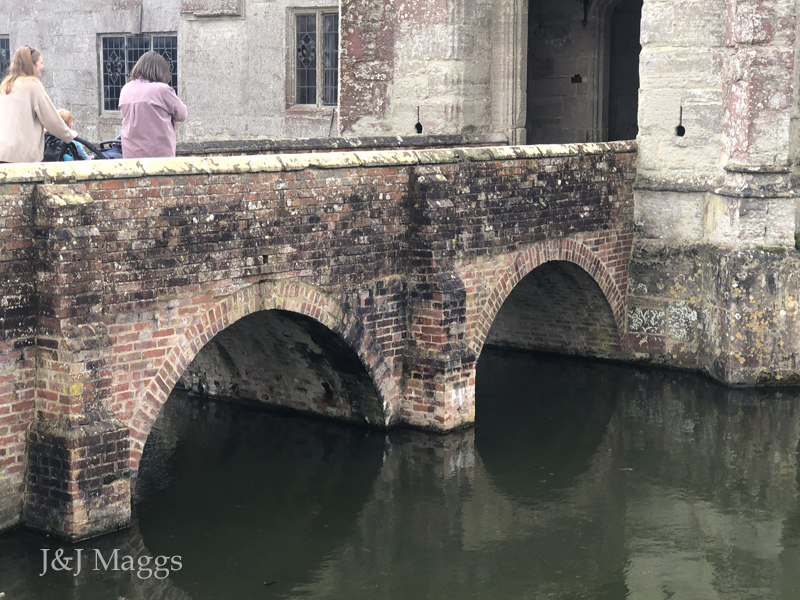
While the 13th century moat is still intact, the drawbridge has been replaced with this brick bridge, probably in the 19th century.
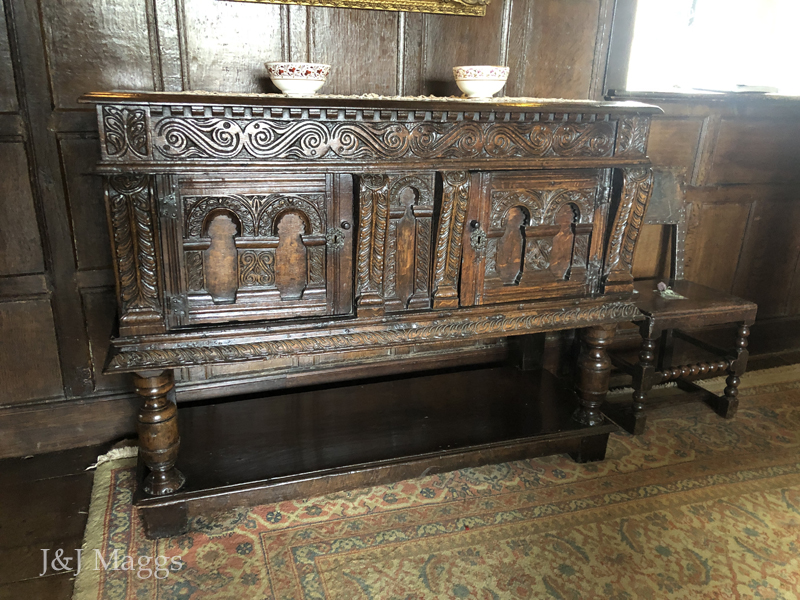
One of many oak cupboards found in the house and a Cromwellian chair
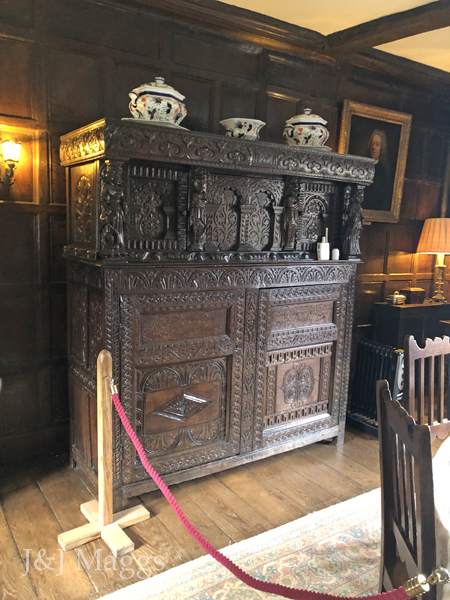
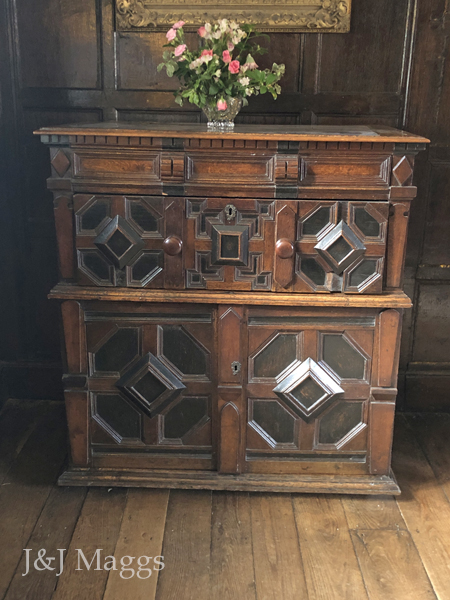
Another interesting cupboard, with applied geometric designs and painted grounds
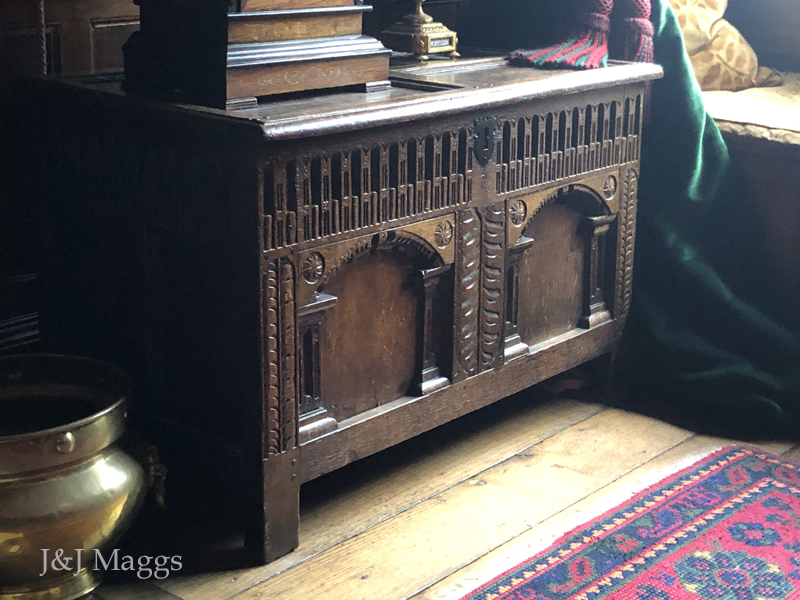
An exceptionally handsome carved oak coffer with deeply recessed panels
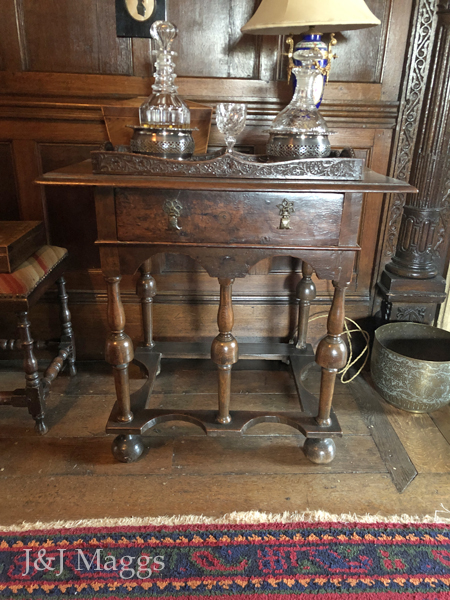
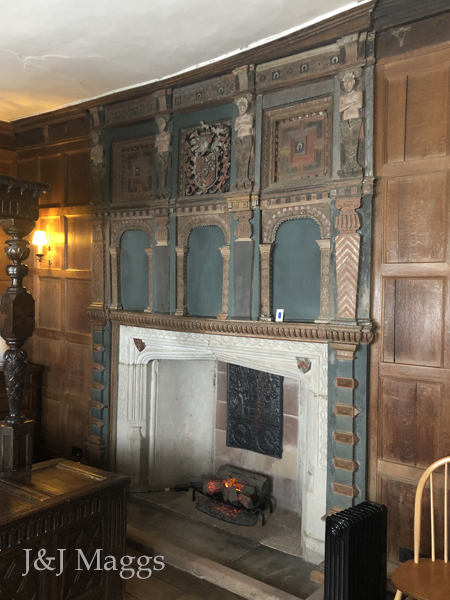
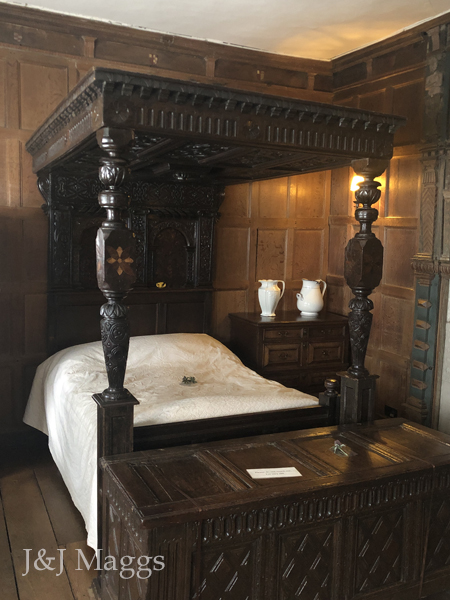
A fine oak tester bed with another carved coffer at its foot and a chest of drawers near its head
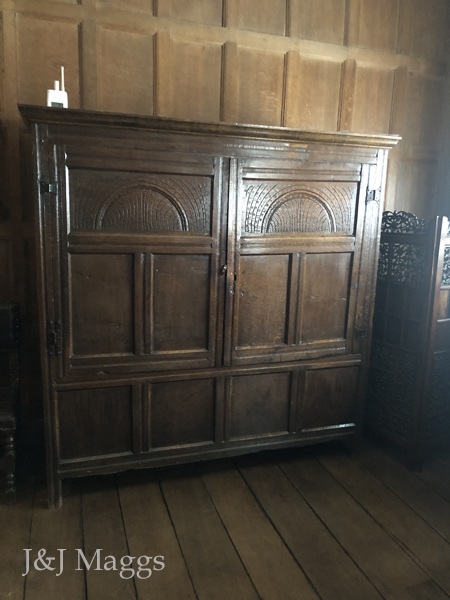
An oak "hanging cupboard", rare in our experience, but found in several of the houses we visited
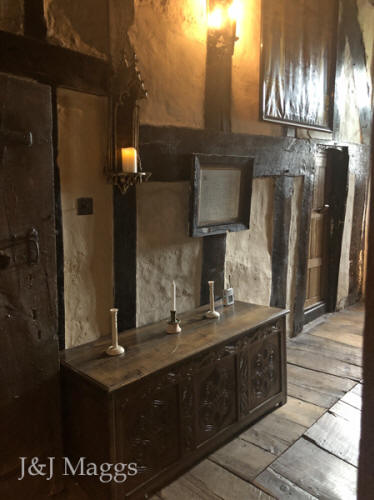
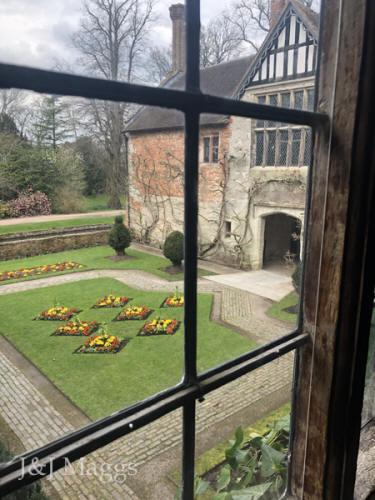
~ ~ ~ ~ ~ ~ ~ ~ ~ ~ ~ ~ ~ ~ ~ ~ ~ ~ ~ ~ ~ ~ ~ ~ ~ ~ ~ ~ ~ ~ ~ ~ ~ ~ ~ ~ ~ ~ ~ ~ ~ ~ ~ ~ ~ ~ ~ ~
2. Wightwick Manor
(West Midlands)
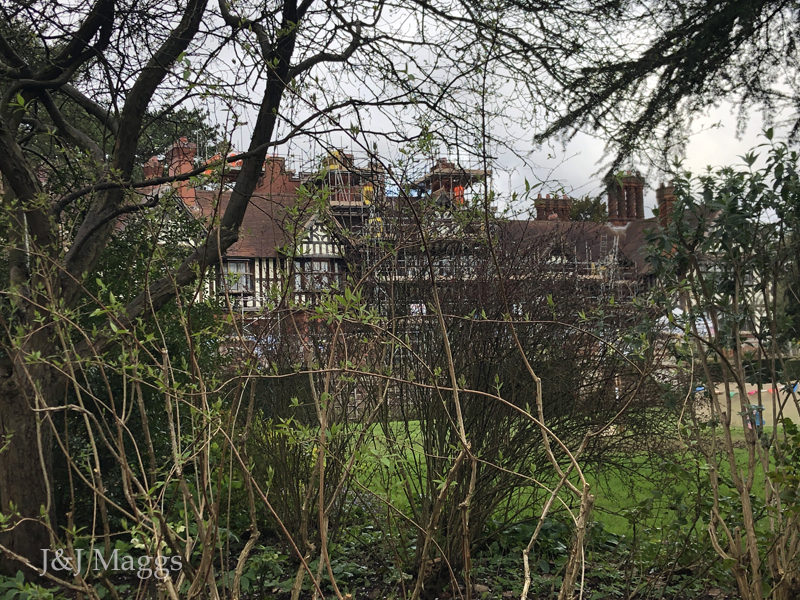
On Thursday morning we left the Cotswolds and drove
to Leominster, where we made our final pre-vacation purchases. From Leominster
it was only an hour’s drive to Wightwick Manor, built in the late 19th
century in the manner of a Tudor mansion, as the family home of Theodore and Flora Mander. The Mander family, and particularly Theodore and Flora's son
Geoffrey, who inherited the house after the deaths of his parents, enjoyed
the work of the pre-Raphaelite artists, and Wightwick Manor houses their
collection, which is continually expanding under the curatorship of the
National Trust. Paintings and drawings by Burne-Jones, John Ruskin, and Dante
Gabriel Rosetti, fabrics and wallpapers by William Morris as well as books from his
Kelmscott Press, and tiles by William de Morgan complement the Arts and
Crafts building.
The furniture is a curious mixture of modern
and ancient. Furniture
from the 17th century stands beside pieces made
around the turn of the 20th. Some of these latter examples are decorated
with paintings by Rossetti and other members of the society. While it is an eclectic
mix, representing late Victorian taste rather than academic conciseness, our
visit was most rewarding.
~ ~ ~ ~ ~ ~ ~ ~ ~ ~ ~ ~ ~ ~ ~ ~ ~ ~ ~ ~ ~ ~ ~ ~ ~ ~ ~ ~ ~ ~ ~ ~ ~ ~ ~ ~ ~ ~ ~ ~ ~ ~ ~ ~ ~ ~ ~ ~
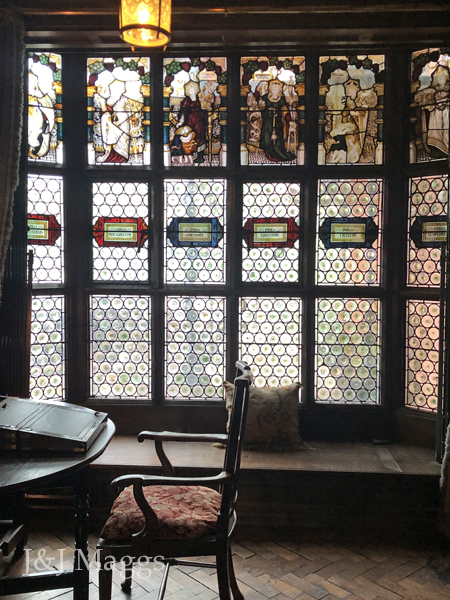
Window seat in The Hall, with stained glass windows by Charles Kempe, dated 1888
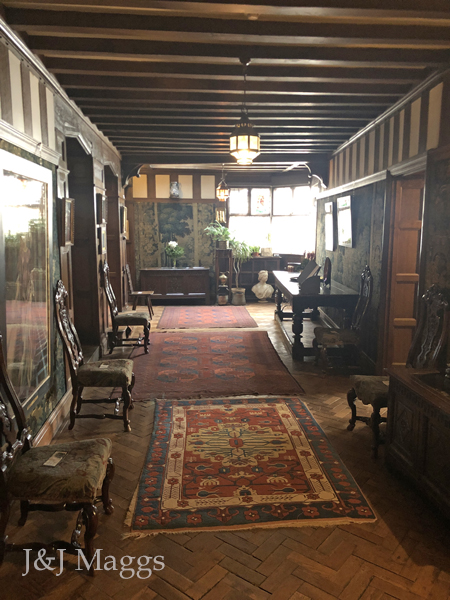
Large spaces, designed to recall an earlier time
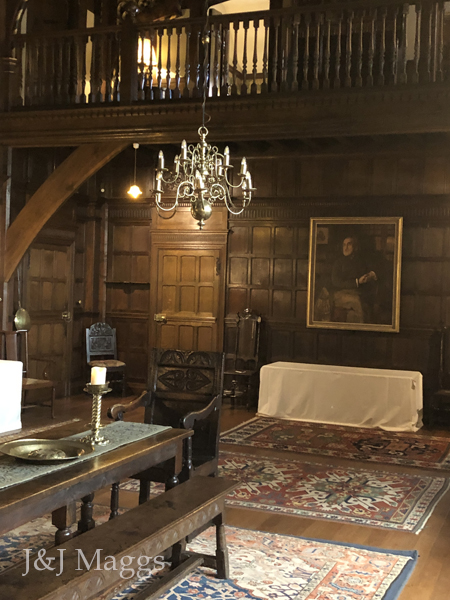
The Great Parlor (1893) with oak paneling and 17th-century furniture
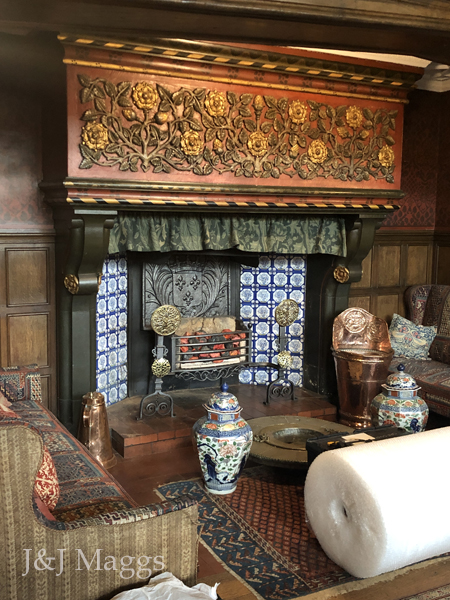
The inglenook in The Great Parlor with decoration by Kempe, early Delft tiles, and Chinese porcelain
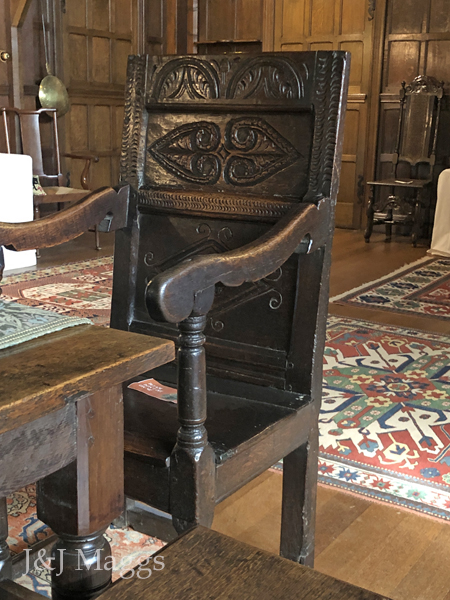
Two early oak chairs
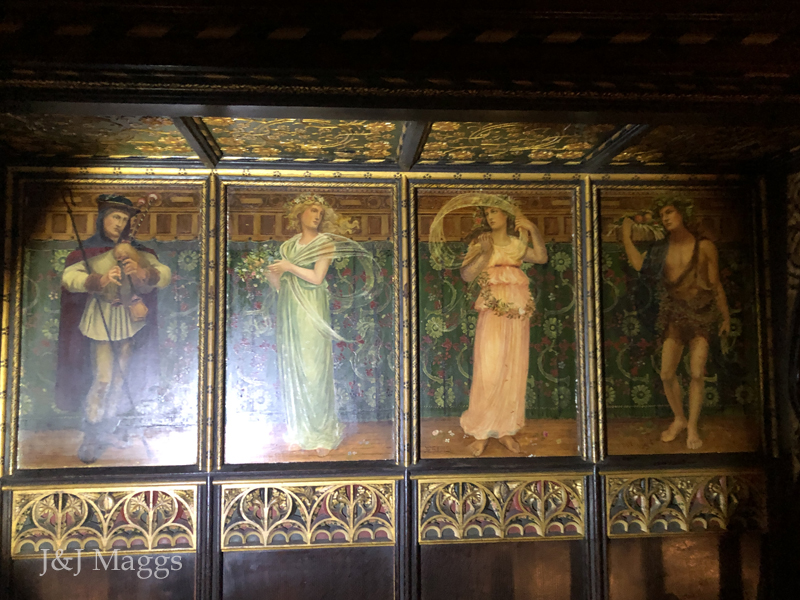
A decorative panel on the first floor of the house, probably painted by Rossetti

A bound copy of William Morris's Kelmscott Press edition of Chaucer's works

A large tapestry on the first floor (William Morris?)
3. Little Moreton Hall
(Cheshire)
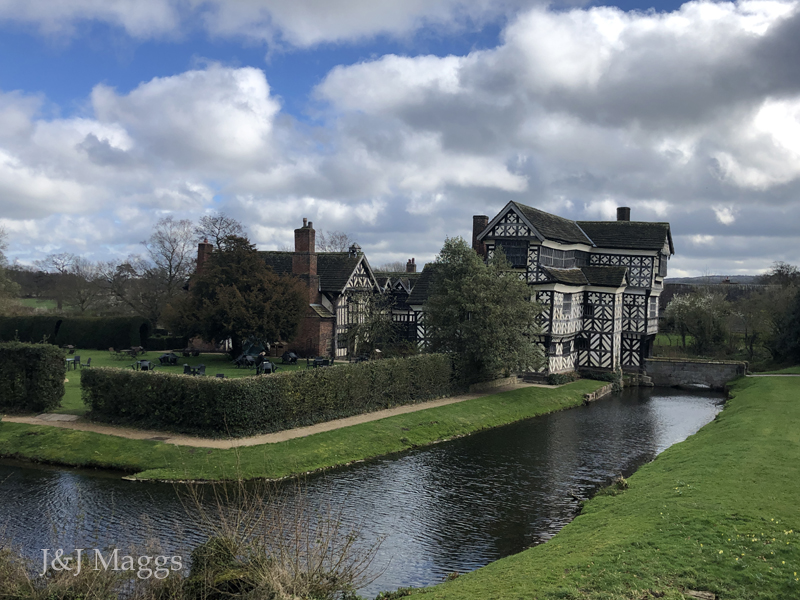
One of our favorite destinations in England, we’ve
visited Little Moreton Hall several times over the last decades. Since this
itinerary would bring us within a hundred miles of Moreton, there was no question that
we would include a visit on this trip.
There is probably no better introduction to Little
Moreton Hall than this one, found in the National Trust’s guide.
It seems impossible not to feel, as we did on our
first visit years ago, that we had come to a very special place. Perhaps the following
images will show why Little Moreton Hall remains a favorite place to
visit.
~ ~ ~ ~ ~ ~ ~ ~ ~ ~ ~ ~ ~ ~ ~ ~ ~ ~ ~ ~ ~ ~ ~ ~ ~ ~ ~ ~ ~ ~ ~ ~ ~ ~ ~ ~ ~ ~ ~ ~ ~ ~ ~ ~ ~ ~ ~ ~
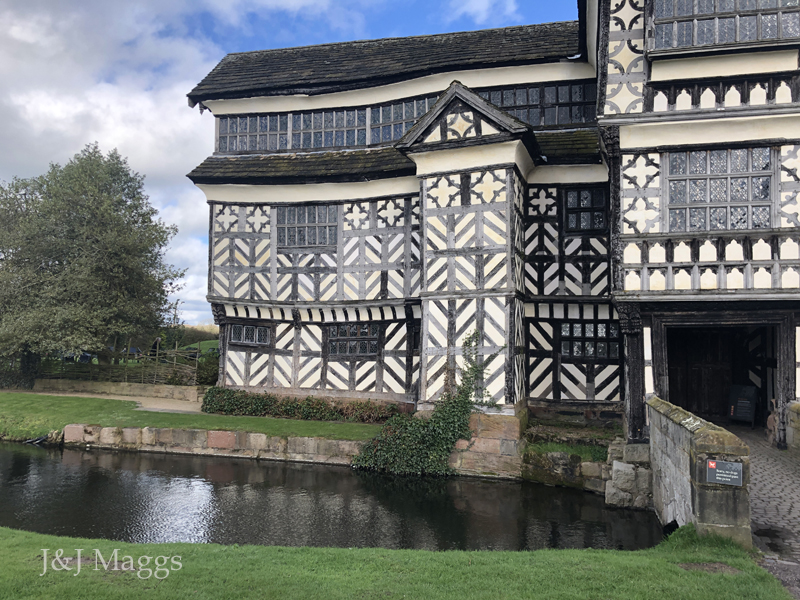
The eastern end of the south range,
misshapen by the weight of the Long Gallery
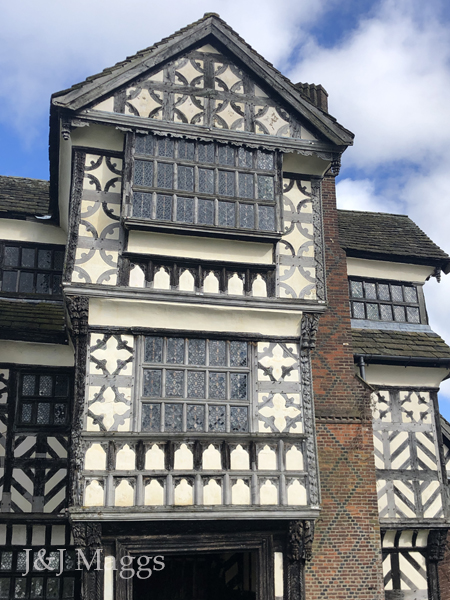
The Gallery Chamber sitting atop the Bridge Chamber
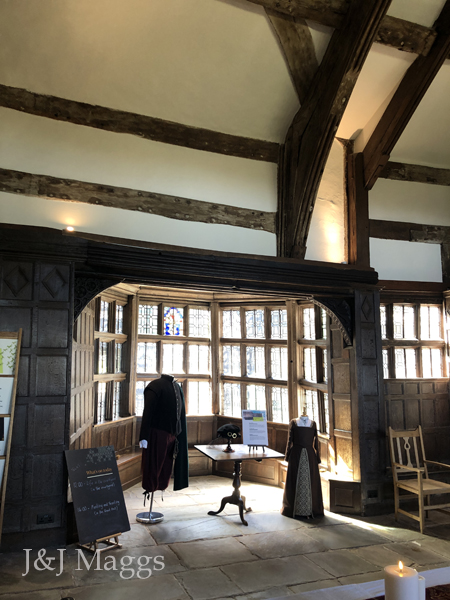
Unlike many other Trust properties, Little Moreton Hall contains very little furniture - testimony to its neglect during the 18th and 19th centuries.
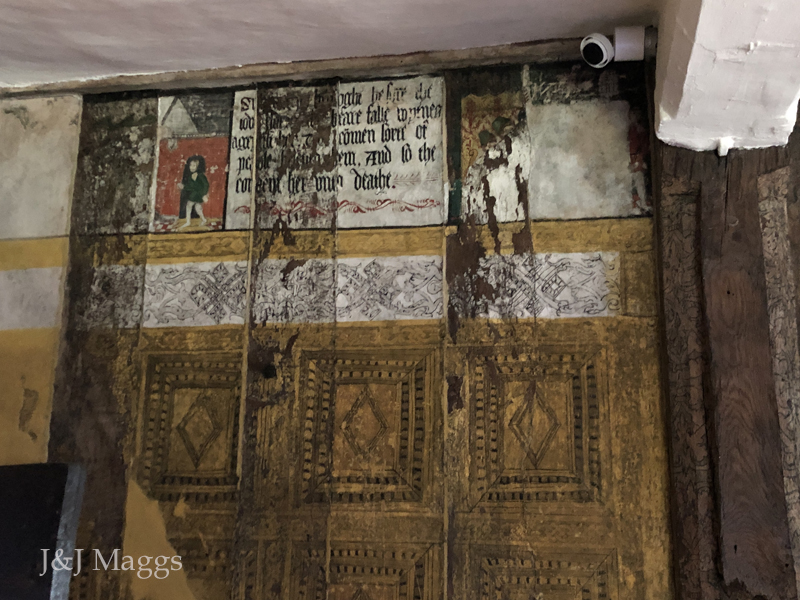
The painted plaster walls of The Little Parlour - discovered and exposed in 1976
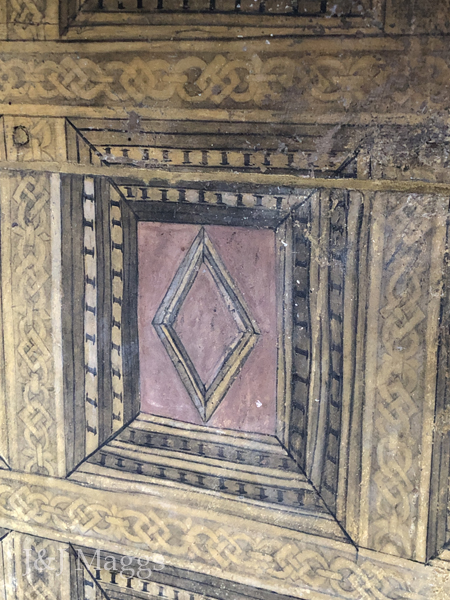
One of The Little Parlour's simulated panels
Unlike most oak panels, these suggest significant depth, like this court cupboard in our shop.
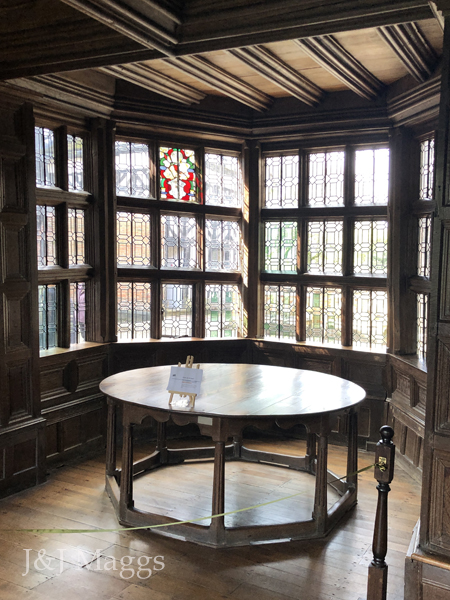
The octagonal table in The Great Parlour is one of the few pieces of furniture original to the house.
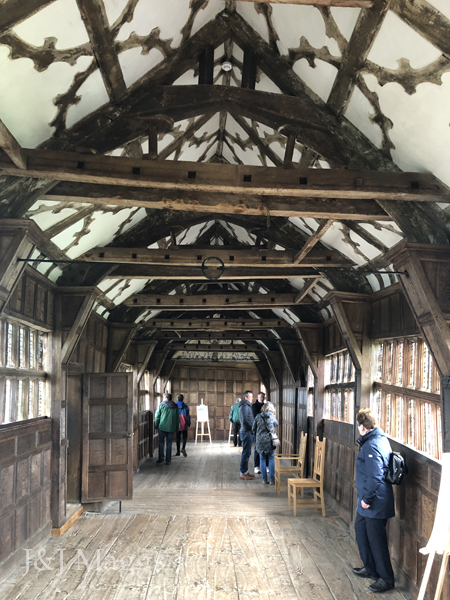
The Long Gallery, with its oddly undulating floor
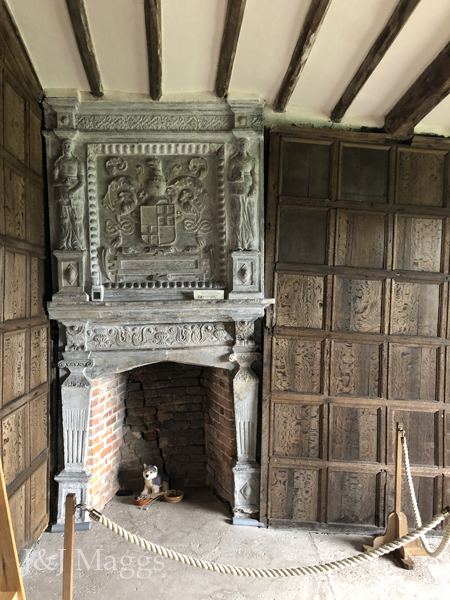
The Gallery Chamber.
Visitors usually feel that the fireplace leans, but that illusion is caused by the sagging floor and walls.
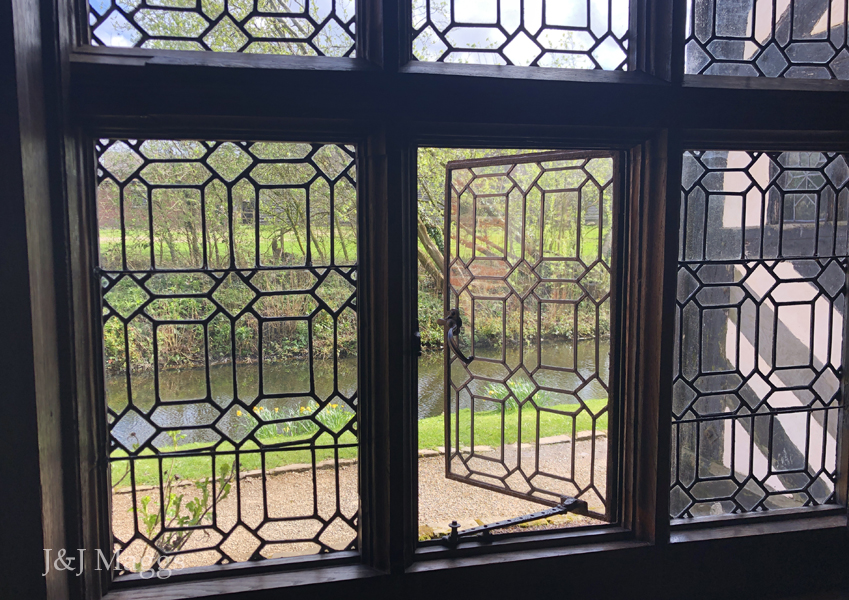
~ ~ ~ ~ ~ ~ ~ ~ ~ ~ ~ ~ ~ ~ ~ ~ ~ ~ ~ ~ ~ ~ ~ ~ ~ ~ ~ ~ ~ ~ ~ ~ ~ ~ ~ ~ ~ ~ ~ ~ ~ ~ ~ ~ ~ ~ ~ ~
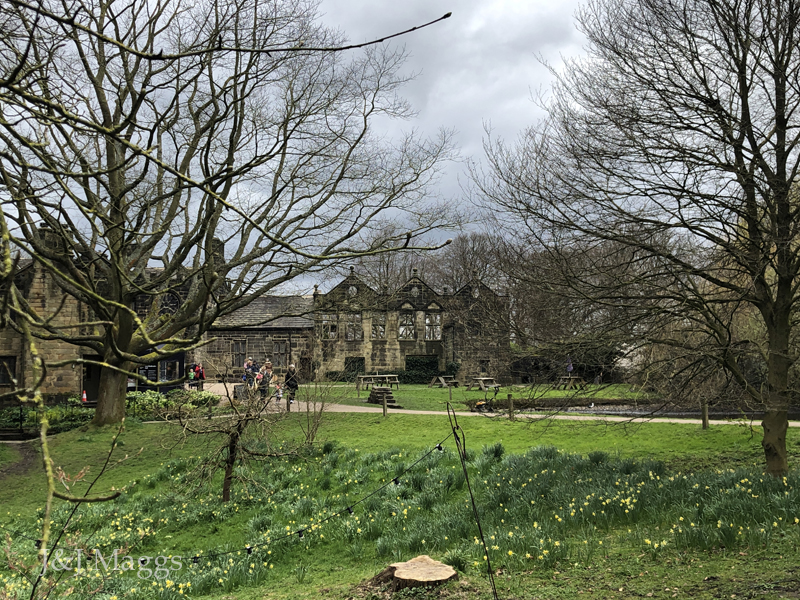
From Little Moreton Hall, we drove two hours north
to Keighley in West Yorkshire, a few miles northwest of Leeds, to visit
another remarkable National Trust property, East Riddlesden Hall.
The property was purchased by wealthy wool merchant James Murgatroyd in 1638 but, after the devastation caused by English Civil War, it passed to another branch of the family, the Starkies. During the eighteenth century the Starkies flourished and renovated the medieval hall adjacent to the manor.
~ ~ ~ ~ ~ ~ ~ ~ ~ ~ ~ ~ ~ ~ ~ ~ ~ ~ ~ ~ ~ ~ ~ ~ ~ ~ ~ ~ ~ ~ ~ ~ ~ ~ ~ ~ ~ ~ ~ ~ ~ ~ ~ ~ ~ ~ ~ ~
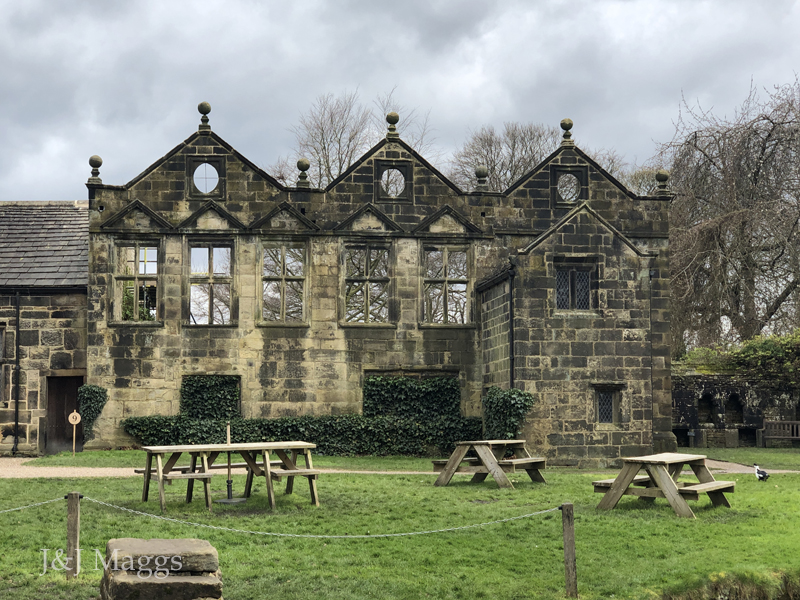
The facade of the Starkie Wing, which was added in the 1690s and demolished in 1905
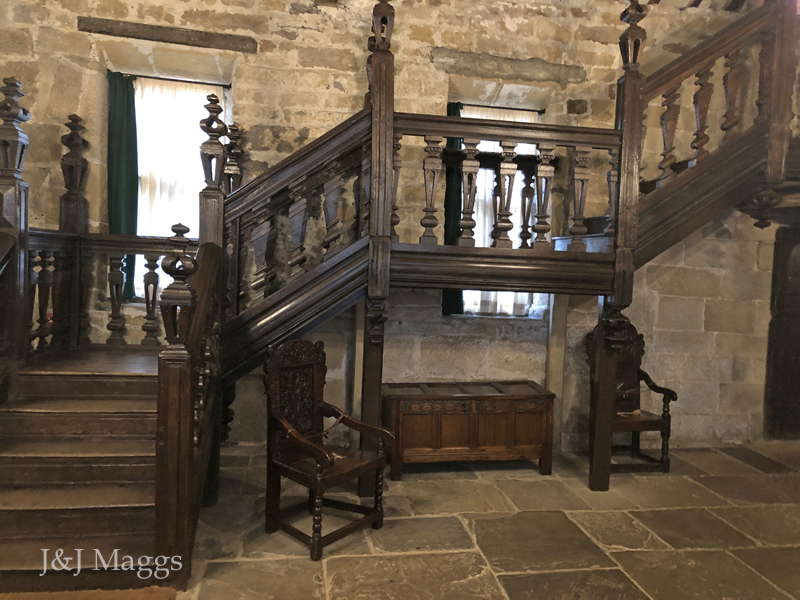
The grand stairway, taken by the Trust from a local school that was being demolished and adapted to this space
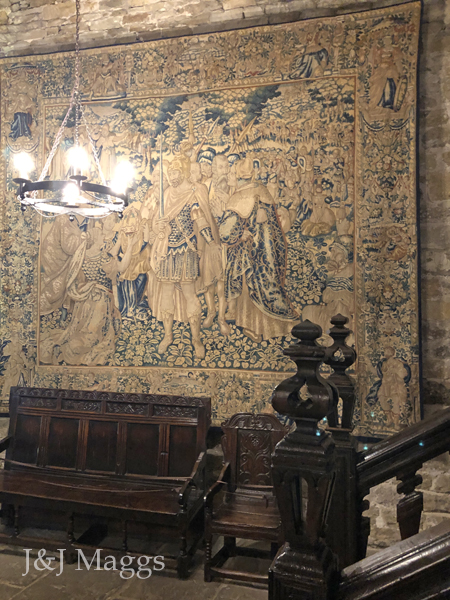
One of several tapestries in the house, with a settle and a wainscot chair
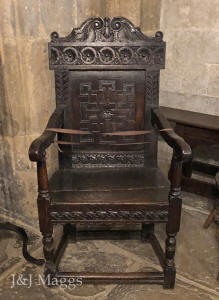
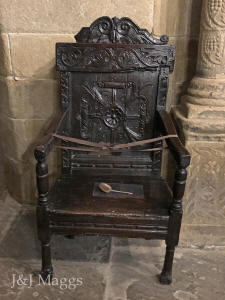
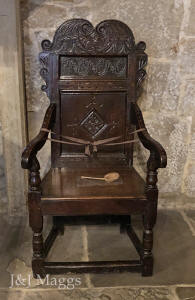
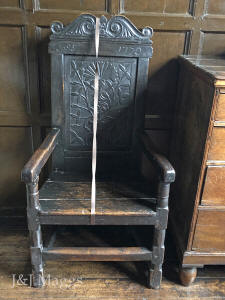
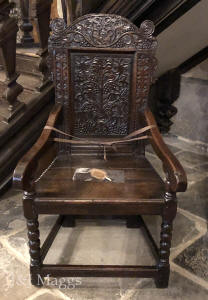
Five more wainscot armchairs, all of remarkably high quality, presumably sourced locally by the Trust
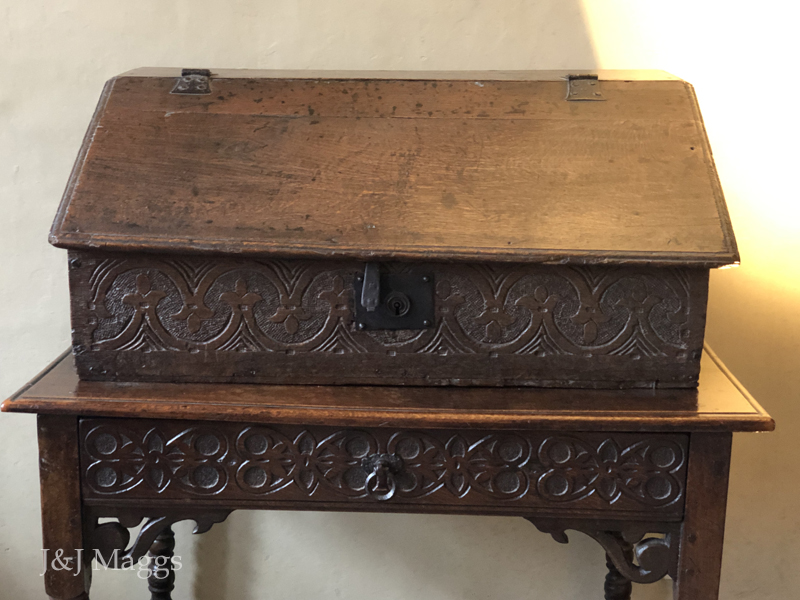
An oak slope on a finely carved table
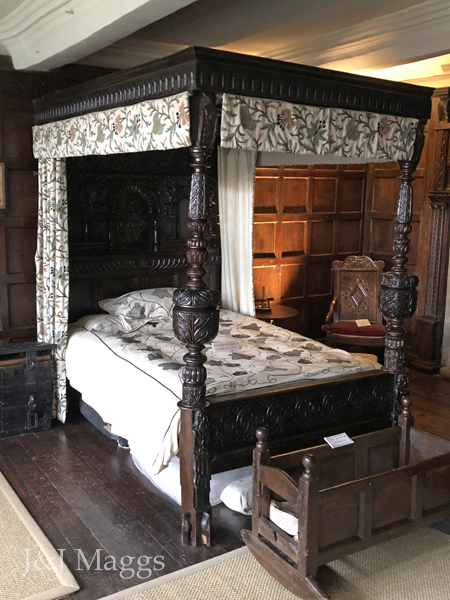
A tester bed, wainscot chair, and cradle in The Great Chamber
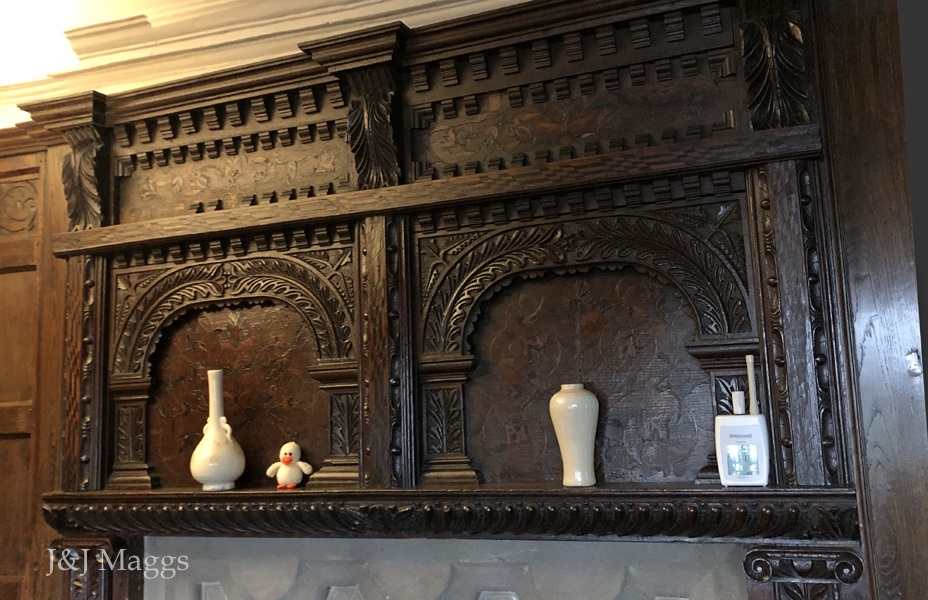
Oak overmantle in The Drawing Room
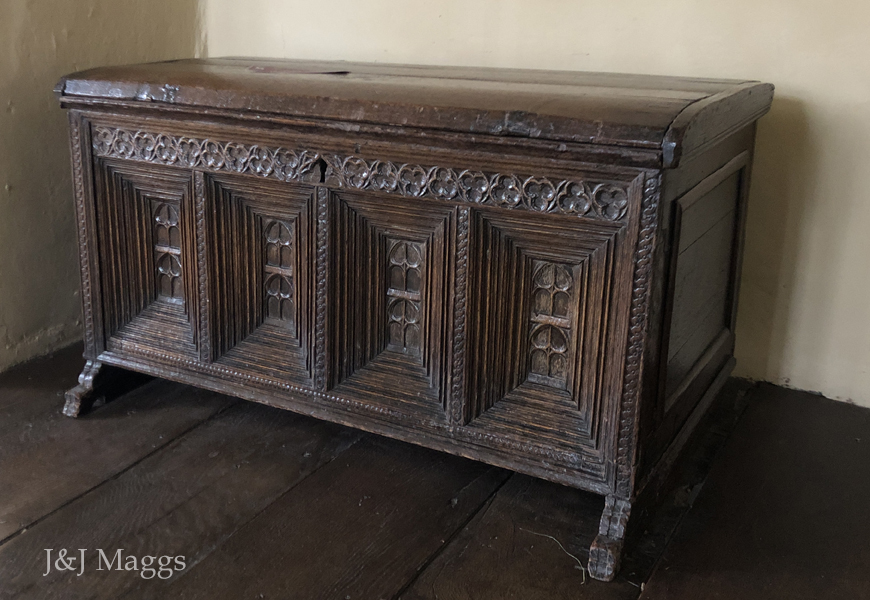
An interesting coffer with perspective panels, like the painted walls of Little Moreton Hall and this court cupboard.
The curators give provenance as "Continental, 1500 - 1525".
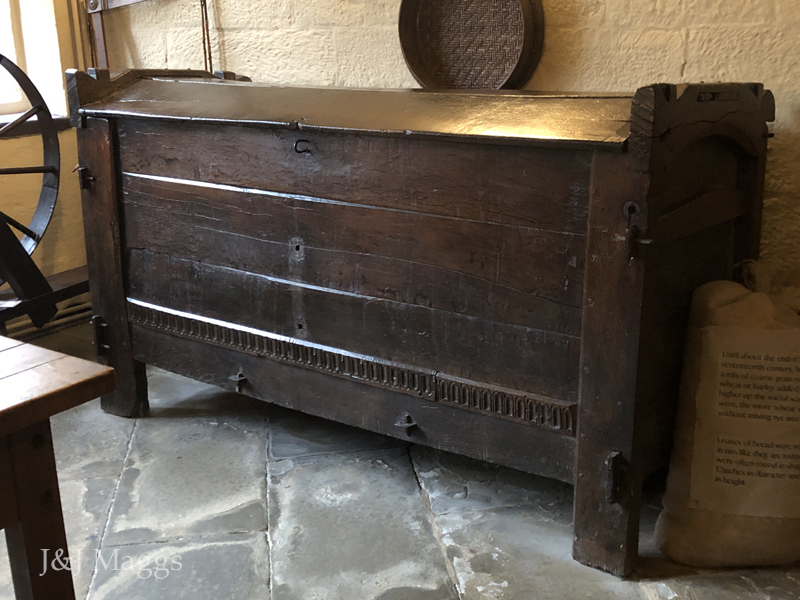
The grain ark of 1600 - original to the house
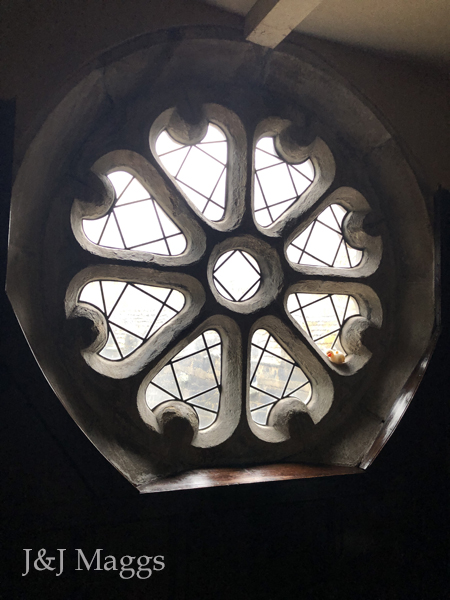
One of Riddelsden's two rose windows
~ ~ ~ ~ ~ ~ ~ ~ ~ ~ ~ ~ ~ ~ ~ ~ ~ ~ ~ ~ ~ ~ ~ ~ ~ ~ ~ ~ ~ ~ ~ ~ ~ ~ ~ ~ ~ ~ ~ ~ ~ ~ ~ ~ ~ ~ ~ ~
From Keighley we drove to Grange-over-Sands and the bed and breakfast that would be our home for the next three days.
~ ~ ~ ~ ~ ~ ~ ~ ~ ~ ~ ~ ~ ~ ~ ~ ~ ~ ~ ~ ~ ~ ~ ~ ~ ~ ~ ~ ~ ~ ~ ~ ~ ~ ~ ~ ~ ~ ~ ~ ~ ~ ~ ~ ~ ~ ~ ~
CLICK HERE for Part II - Cumbria and Lancashire
~ ~ ~ ~ ~ ~ ~ ~ ~ ~ ~ ~ ~ ~ ~ ~ ~ ~ ~ ~ ~ ~ ~ ~ ~ ~ ~ ~ ~ ~ ~ ~ ~ ~ ~ ~ ~ ~ ~ ~ ~ ~ ~ ~ ~ ~ ~ ~
Click
HERE to visit the J&J Maggs Antiques home page.